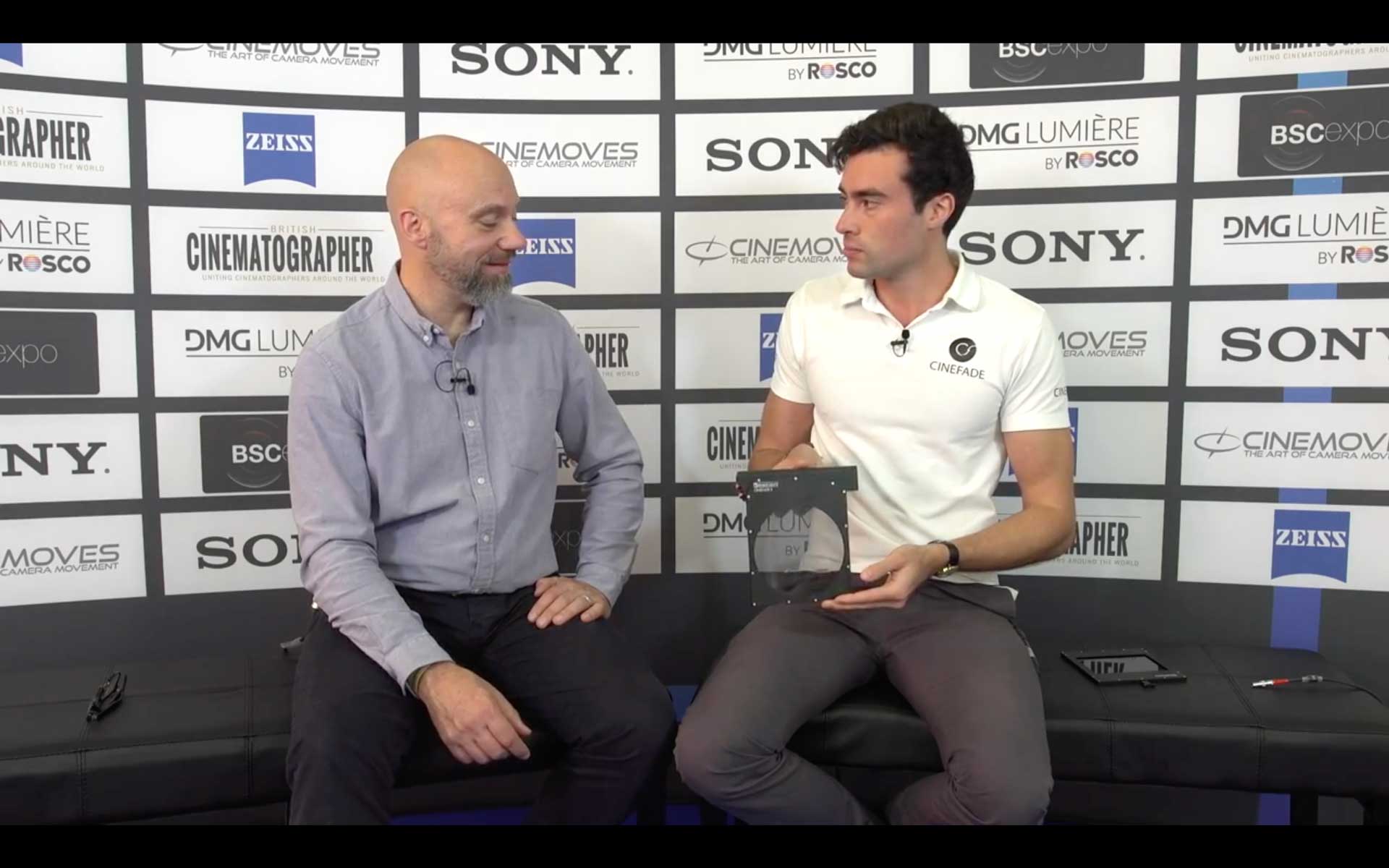Shooting on Sony Venice Cameras at 6K 17:9 with the new large format Leitz Prime lenses, the Cinefade enables Director of Photography Balazs Bolygo BSC, HSC to transition from a very shallow depth of field at T1.8 to a deep depth of field at around T8, a Cinefade of more than 4 stops. In the end, two distinct scenes made it into the final cut…
Read MoreThe Cinefade variable depth of field effect is known as a creative storytelling tool that is often used as a visual effect to accentuate a particularly dramatic moment. The Cinefade system can however also be used as a practical tool to make the DP’s and AC’s job on set easier.
DP Kevin Fletcher used the Cinefade system on a complicated tracking shot to aid his 1AC in achieving critical focus. Starting on an extreme close-up, the depth of field was kept broad to increase the likelihood of maintaining perfect focus. As the camera tracked backwards to a wide shot, the Cinefade was used to imperceptibly decrease depth of field in order to maintain the shallow depth of field look and communicate the character’s sense of isolation.
Read MorePolarisers are essential on any automotive shoot, allowing the Director of Photography to control reflections on the bodywork and windshield of the ‘hero car’. Automotive productions often use a crane, Russian Arm, Technodolly or car rig to stabilise and move the camera, making the camera inaccessible to the crew. Wireless control of the camera and its accessories is therefore essential and the Cinefade Motorised Polariser enables filmmakers to remotely control a polariser via the cmotion cPro lens control system.
Read MoreThe Cinefade VariND makes it easier for ACs to keep their distance to the camera operator and actors, in addition to avoiding unnecessary contact with the camera and accessories.
Read MoreThe novel Cinefade system synchronises the external iris motor of a professional camera system with a light transmission filter to vary depth-of-field in film.
The same light transmission filter can also be used individually as a motorised variable ND filter that is remotely controlled by a cmotion lens control system to allow for precise and fast exposure changes when the camera is inaccessible or when the creative brief calls for an exact T-stop to maintain a consistent depth-of-field.
Tracking shots at a shallow depth of field in which the camera tracks closer to the subject are notoriously hard for focus pullers to keep sharp, especially if the subject is also moving. A variable depth of field can be used to extend the depth of field when tracking towards the subject to give the focus puller a better chance of nailing critical focus.
Read MoreOur Motorised Polariser can be used independently as a RotaPola that is automatically calibrated, allows users to set marks and can be controlled remotely, which sets it apart from similar products such as the Tiffen Multi Rota Tray or ARRI’s Rota Pola frame.
Read MoreThe cmotion Cinefade VariND is made up of a Motorised Polariser and a Static Polariser which when combined can be used as a motorised variable ND filter that is remotely controlled by a cPRO lens control system to allow for precise and fast exposure changes when the camera is inaccessible or when the creative brief calls for an exact T-stop to maintain a consistent depth-of-field, even in changing lighting conditions.
Read More“Director Jaume Collet-Serra and I wanted a severe depth-of-field shift to accentuate Liam Neeson's experience - something to isolate him from his surrounding world. I was in the process of designing a system when my A-camera first AC, Dave Cozens, came upon Cinefade. It was exactly what we were looking for.”
- Paul Cameron ASC
Read More




























